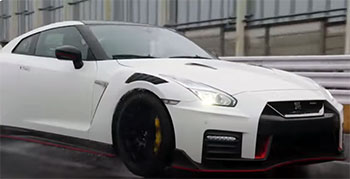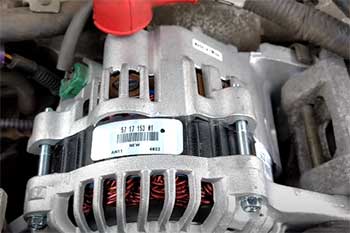I’ve always been drawn to the raw energy of high-performance cars, where power, precision, and passion collide. In this article, I’m putting two automotive titans—the Nissan GT-R and the Dodge Hellcat—under the microscope to compare their strengths, weaknesses, and what it’s like to live with them.
My goal is to help you decide which of these beasts suits your driving style, whether you crave track precision or straight-line dominance. Through my experiences, detailed pros and cons, and a side-by-side comparison, you’ll get a clear picture of what these cars offer.
Comparison Table: Nissan GT-R Vs. Dodge Hellcat
| Feature | Nissan GT-R | Dodge Hellcat |
|---|---|---|
| Engine | 3.8L Twin-Turbo V6 | 6.2L Supercharged V8 |
| Horsepower | 565-600 hp | 707-807 hp |
| Torque | 467 lb-ft | 650-707 lb-ft |
| Transmission | 6-speed dual-clutch | 8-speed automatic or 6-speed manual |
| Drivetrain | All-wheel drive | Rear-wheel drive |
| 0-60 mph | ~2.7-3.0 seconds | ~3.6-3.8 seconds |
| Quarter-Mile | ~11.0-11.2 seconds | ~11.1-11.8 seconds |
| Top Speed | ~196 mph | ~199-203 mph |
| Weight | ~3,900 lbs | ~4,400-4,500 lbs |
| Starting Price | ~$113,540 | ~$68,600 |
| Fuel Economy | 16/22 MPG (city/highway) | 13/22 MPG (city/highway) |
| Interior Quality | Functional, dated design | Spacious, modern with Uconnect system |
| Track Performance | Superior handling and grip | Straight-line focus, less agile |
| Daily Drivability | Stiff ride, tight cabin | Comfortable, spacious sedan/coupe |
My Experience With Nissan GT-R

I’ll never forget the first time I slid behind the wheel of a Nissan GT-R. The cabin felt like a cockpit, with every control within reach, though the design screamed early 2000s.
The moment I hit the gas, the twin-turbo V6 roared to life, and the all-wheel-drive system gripped the road like a vice.
It’s a car that inspires confidence, whether you’re carving through corners or launching off the line.
The GT-R’s precision is surgical—it’s like driving a supercomputer on wheels. On a twisty backroad, it danced, the suspension and AWD working in harmony to keep me planted.
But daily life with the GT-R? That’s where things get tricky. The ride is stiff, almost punishing, on rough roads. The cabin, while functional, feels dated compared to modern rivals, and the rear seats are more decorative than practical.
I took it to a drag strip once, and its launch control was idiot-proof, propelling me to 60 mph in under three seconds. Yet, the constant attention from onlookers—everyone wants to snap a pic of “Godzilla”—can be overwhelming. Maintenance costs also gave me pause; those hand-built engines aren’t cheap to service.
The GT-R is a track weapon that demands respect. It’s not just a car; it’s an experience that blends raw power with technological wizardry. If you’re after a car that dominates corners and turns heads, this is it, but it’s not the easiest daily driver.
Pros Of Nissan GT-R
- All-Wheel Drive Mastery: The GT-R’s AWD system delivers unmatched traction, making it a beast off the line and through corners, even in less-than-ideal conditions.
- Track-Ready Handling: With precise steering and a rigid chassis, it’s built for carving up twisty roads, earning its “Godzilla” nickname on circuits like the Nürburgring.
- Launch Control Precision: The dual-clutch transmission and launch control make 0-60 sprints feel effortless, hitting as low as 2.7 seconds in optimal conditions.
- Customizable Performance: Adjustable suspension and driving modes let you tailor the car for comfort or aggression, offering versatility for different scenarios.
- Iconic Styling: Its aggressive, angular design screams performance, turning heads wherever it goes, from gas stations to car meets.
- Proven Performance Pedigree: The GT-R’s history of slaying supercars at a fraction of their cost makes it a value-driven legend in the performance world.
- Reliable Power Delivery: The twin-turbo V6 provides smooth, consistent power across the rev range, avoiding the lag often found in turbocharged engines.
Read More: My Thoughts On Ford Escape Vs. Mazda CX-5
Cons Of Nissan GT-R
- Dated Interior: The cabin’s design feels stuck in 2008, with materials and tech that lag behind competitors like the Porsche 911 or even the Hellcat.
- Harsh Ride Quality: The stiff suspension makes daily commutes feel like a workout, especially on bumpy roads or long drives.
- High Maintenance Costs: Servicing the hand-built V6 and complex AWD system can be pricey, with specialized parts and labor adding up quickly.
- Limited Rear Space: The rear seats are cramped, barely usable for adults, making it less practical for carrying passengers.
- Fuel Economy Struggles: At 16/22 MPG, it’s not a gas guzzler by performance car standards, but it’s still a hit to the wallet for daily driving.
- Transmission Wear Concerns: Older models (2009-2010) have reported costly transmission issues if not properly maintained, especially with frequent hard launches.
- Expensive Upgrades: Modding the GT-R for more power can cost thousands, and pushing it too far risks reliability without significant investment.
My Experience With Dodge Hellcat

The Dodge Hellcat—whether in Challenger or Charger form—is a different kind of animal.
My first drive in a Hellcat was pure sensory overload.
The supercharged 6.2L V8’s growl rattled my bones, and mashing the throttle felt like unleashing a freight train.
I hit 60 mph in about 3.6 seconds, but the real thrill was the quarter-mile, where the Hellcat’s 707 horsepower (or more in Redeye models) made it feel like nothing could catch me.
The cabin surprised me with its space and comfort, and the Uconnect system was a breeze to use.
On the flip side, the Hellcat’s weight—over 4,400 pounds—makes it feel like a boat in corners. I took it to a local autocross event, and while it powered through straights, tight turns exposed its rear-wheel-drive limitations. Daily driving, though, was a blast.
The spacious interior and decent ride quality made it feel like a muscle car you could live with. But the fuel economy? A dismal 13 MPG in the city had me wincing at every fill-up. And don’t get me started on tire wear—those Pirelli P-Zeros didn’t last long after a few burnouts.
The Hellcat is a brash, unapologetic muscle car that’s all about raw power and straight-line speed. It’s not refined, but it’s a riot to drive and surprisingly livable for everyday use.
Pros Of Dodge Hellcat
- Monstrous Power Output: With 707-807 hp, the Hellcat’s supercharged V8 delivers jaw-dropping acceleration, hitting the quarter-mile in as low as 11.1 seconds.
- Affordable Performance: Starting at around $68,600, it offers supercar-level power for a fraction of the price, making it a bargain in its class.
- Spacious, Comfortable Interior: The roomy cabin, especially in the Charger, feels like a luxury sedan, with supportive seats and ample legroom.
- Intuitive Uconnect System: Dodge’s touchscreen infotainment is user-friendly, with bright displays and responsive controls for navigation and media.
- Versatile Transmission Options: Choose between a slick 8-speed automatic or a 6-speed manual for a more engaging, old-school driving experience.
- Muscle Car Swagger: Its bold styling, massive grille, and roaring exhaust make it a head-turner that embodies American automotive bravado.
- Daily Drivability: Despite its power, the Hellcat is surprisingly comfortable for commutes, with a smoother ride than the GT-R on rough roads.
Cons Of Dodge Hellcat
- Poor Handling Dynamics: Its heavy weight and rear-wheel-drive setup make it less agile in corners, struggling on tight tracks compared to the GT-R.
- Abysmal Fuel Economy: At 13/22 MPG, it’s a gas guzzler, especially in city driving or when you can’t resist flooring it.
- Tire Wear Issues: The rear tires take a beating from burnouts or aggressive launches, leading to frequent and costly replacements.
- Limited Traction Off The Line: Without drag radials, the RWD setup struggles to hook up, making launches tricky without practice or mods.
- Build Quality Concerns: Some interior plastics feel cheap, and long-term reliability can be a gamble compared to the GT-R’s robust engineering.
- Weight Penalty: At 4,400-4,500 pounds, it feels sluggish in corners, and the extra mass impacts braking and handling precision.
- High Insurance Costs: The Hellcat’s power and reputation for spirited driving can lead to steep insurance premiums, especially for younger drivers.
Comparison With Other Brands

- Nissan GT-R Vs. Porsche 911 Turbo S: The 911 Turbo S, with its 640 hp and AWD, outpaces the GT-R in straight-line speed (0-60 in ~2.6 seconds) and offers a more luxurious interior. However, at over $200,000, it’s nearly double the GT-R’s price, making the Nissan a better value for performance enthusiasts.
- Dodge Hellcat Vs. Chevrolet Corvette Z06: The Corvette Z06, with 650 hp and a starting price of ~$79,495, is lighter and handles better than the Hellcat, especially on tracks. But the Hellcat’s raw power and lower price give it an edge for drag strip dominance and daily comfort.
- Nissan GT-R Vs. Acura NSX: The NSX’s hybrid powertrain (573 hp) and AWD offer similar track prowess to the GT-R, but its $157,500 price and less aggressive styling make the GT-R a more visceral, cost-effective choice for thrill-seekers.
- Dodge Hellcat Vs. Ford Mustang Shelby GT500: The GT500’s 760 hp and sharper handling make it a closer match to the Hellcat on the track, but its $74,000 starting price is slightly higher. The Hellcat’s roomier interior and sedan option (Charger) give it a practical edge.
- Nissan GT-R Vs. Tesla Model S Plaid: The Tesla’s 1,020 hp and 2.1-second 0-60 time crush the GT-R in a straight line, but its $129,990 price and less engaging handling make the GT-R a better pick for track enthusiasts.
- Dodge Hellcat Vs. BMW M5: The M5’s 617 hp and AWD offer better handling and luxury than the Hellcat, but its $103,700 price and less raw power make the Dodge a budget-friendly muscle car alternative.
- Nissan GT-R Vs. Audi R8: The R8’s 602 hp V10 and AWD match the GT-R’s performance, but its $150,000 price and less aggressive demeanor make the GT-R a more accessible supercar-slaying option.
Read More: My Thoughts On BMW X7 Vs. Cadillac Escalade
Frequently Asked Questions (FAQ)
The GT-R is generally faster off the line due to its AWD and launch control, hitting 0-60 in ~2.7 seconds. The Hellcat’s RWD struggles for traction but can match or beat the GT-R in the quarter-mile (~11.1 seconds) with drag radials.
No, the GT-R isn’t the fastest car. Models like the Tesla Model S Plaid (0-60 in ~2.1 seconds) and Bugatti Chiron (top speed ~261 mph) outpace it, though the GT-R remains a top performer for its price.
Cars like the Porsche 911 Turbo S, Chevrolet Corvette ZR1, and Tesla Model S Plaid can beat the Hellcat in a straight line or on a track, thanks to better traction, lighter weight, or higher power.
A standard Mustang GT (450 hp) can’t beat a Hellcat in a straight line due to the Hellcat’s 707+ hp. However, the Mustang Shelby GT500 (760 hp) can compete closely, especially with a skilled driver.
Conclusion
You’re now armed with the full scoop on the Nissan GT-R and Dodge Hellcat—two cars that embody performance in wildly different ways. The GT-R is your scalpel, slicing through corners with precision and AWD grip, perfect if you crave track days and technological finesse. The Hellcat, meanwhile, is your sledgehammer, delivering earth-shaking power and muscle car swagger at a bargain price. Your choice depends on your priorities: agility and track prowess or raw, unfiltered power. Whichever you pick, both will leave you grinning ear to ear—just be ready for the fuel bills and envious stares.

